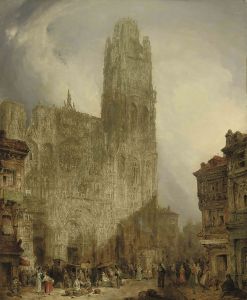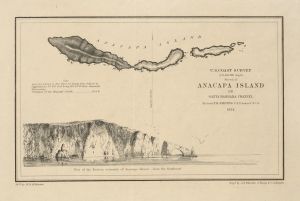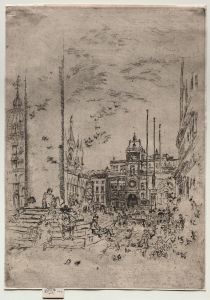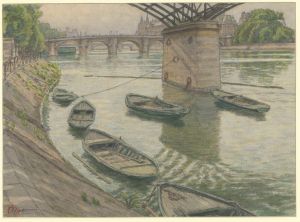
Long Venice
A hand-painted replica of James Abbott McNeill Whistler’s masterpiece Long Venice, meticulously crafted by professional artists to capture the true essence of the original. Each piece is created with museum-quality canvas and rare mineral pigments, carefully painted by experienced artists with delicate brushstrokes and rich, layered colors to perfectly recreate the texture of the original artwork. Unlike machine-printed reproductions, this hand-painted version brings the painting to life, infused with the artist’s emotions and skill in every stroke. Whether for personal collection or home decoration, it instantly elevates the artistic atmosphere of any space.
James Abbott McNeill Whistler was an American artist known for his significant contributions to the art world during the late 19th century. He is particularly renowned for his innovative approach to painting and his influence on the Aesthetic Movement. One of his notable works is "Long Venice," which captures the essence of the Venetian landscape through Whistler's distinctive style.
"Long Venice" is part of Whistler's series of works that depict the city of Venice, a place that greatly inspired him. Whistler visited Venice in 1879, initially planning a brief stay, but he ended up spending over a year there. During this period, he produced a substantial body of work, including paintings, pastels, and etchings, which are collectively known as the "Venice Set." These works are celebrated for their atmospheric quality and the way they capture the unique light and architecture of the city.
The painting "Long Venice" exemplifies Whistler's ability to convey mood and atmosphere through subtle color palettes and delicate brushwork. Whistler often employed a technique known as "tonalism," which emphasized harmony and balance in color and composition. In "Long Venice," this approach is evident in the muted tones and soft transitions between colors, which create a dreamlike representation of the Venetian scene.
Whistler's Venice works, including "Long Venice," are characterized by their focus on the interplay of light and water. The city’s canals and the reflections they cast provided Whistler with the perfect subject matter to explore his interest in capturing transient effects of light and atmosphere. This focus on light and reflection is a hallmark of Whistler's style and is particularly evident in his depictions of Venice.
The composition of "Long Venice" likely features elongated views of the city's iconic canals and architecture. Whistler's choice of perspective and framing often emphasized the horizontal expanse of the landscape, which is suggested by the title "Long Venice." This approach not only highlights the grandeur of Venice's waterways but also invites viewers to immerse themselves in the tranquil and timeless quality of the scene.
Whistler's time in Venice was not only artistically productive but also marked a period of personal and professional growth. The works he created during this time were well-received and helped to solidify his reputation as a leading artist of his time. His Venice series, including "Long Venice," played a crucial role in his career, showcasing his mastery of capturing the essence of a place through his unique artistic vision.
In summary, "Long Venice" by James Abbott McNeill Whistler is a testament to the artist's skill in rendering the atmospheric qualities of a landscape. Through his use of tonalism and focus on light and reflection, Whistler was able to create a work that encapsulates the serene beauty of Venice. This painting, along with his other Venice works, remains an important part of Whistler's legacy, illustrating his ability to transform everyday scenes into poetic and evocative compositions.


















